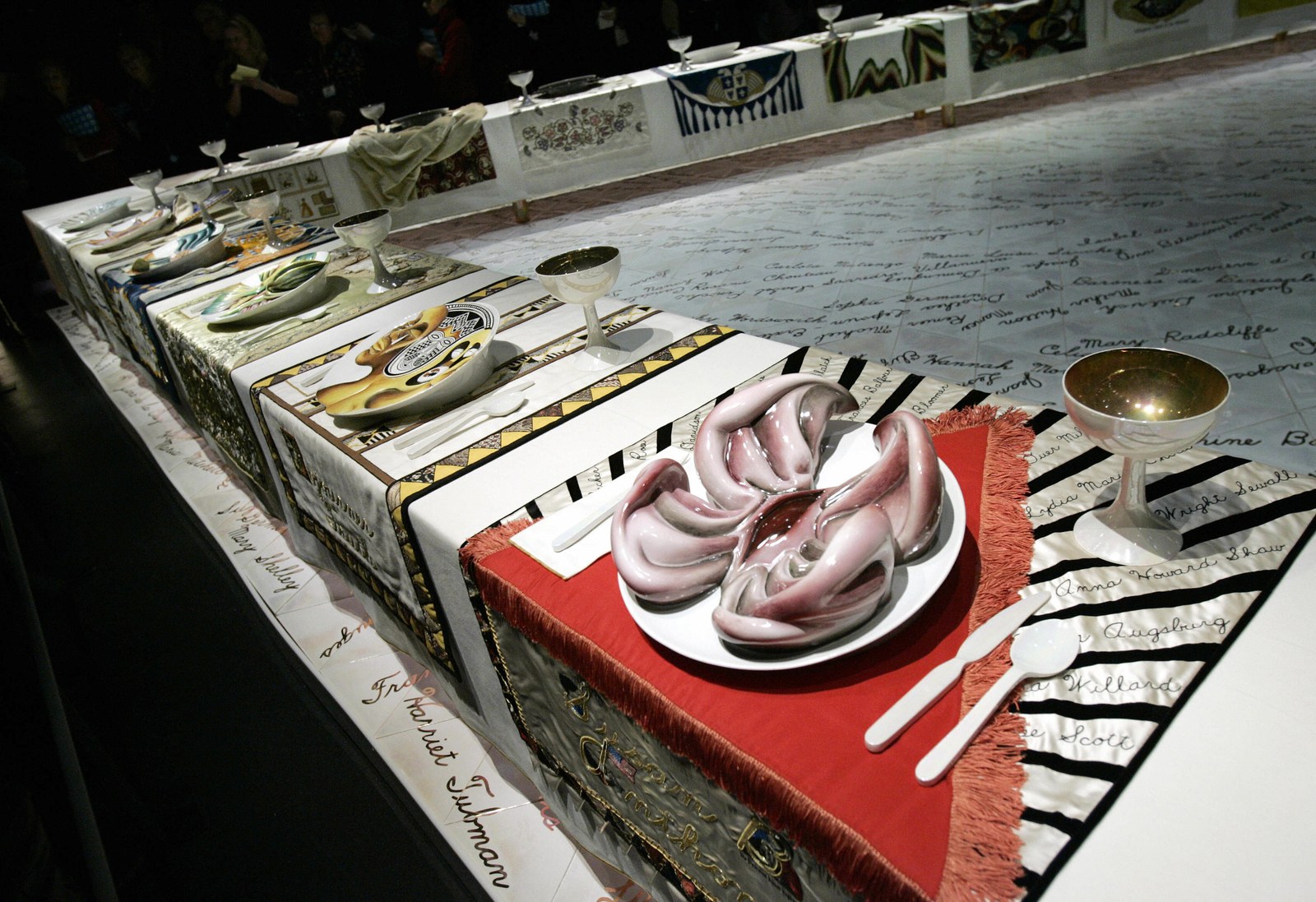Judy Chicago Never Wanted to Have It All

Not that she wants to dwell on the past, but the fact is when artist Judy Chicago was fresh on the L.A. art scene in the 1960s, the best compliment a woman could hope to receive was that she painted “like a man.”
“And generally, there weren’t any compliments because most women artists were invisible. I was able to be somewhat visible,” Chicago insists now, with a note of pride. “But I kept running into obstacles.” Women couldn’t get a foothold in major shows. Dealers didn’t want to work with them. Their husbands wanted them at home, or their children needed them.
The odds—the men!—were stacked against them. And Chicago was determined to beat them. She wanted to make a contribution to art as a discipline. She wanted to create work that would be remembered. And she knew she couldn’t do that from the sidelines. So she began to wonder; how had women ever done it? To whom could she look for an example? But when she started to research her foremothers in the tradition, Chicago came up blank. “I wanted to see if women before me had encountered the same kind of challenges that I was facing, but I discovered that so much of what women had done—there was no record of it,” she recalls. “It had been erased.”
Judy Chicago, The Dinner Party, 1979.
STAN HONDA/AFP/Getty ImagesChicago unveiled the first of what would be a career filled with correctives in March 1979, introducing her most iconic work “The Dinner Party” at the San Francisco Museum of Modern Art. The massive installation was, as the New York Times recently put it, “theatrical, audacious and definitively feminist: a work of stark symbolism and detailed scholarship.” It was also replete with vaginas. The piece is made up of a triangle-shaped banquet table set with 39 plates. Each side is 48 feet, and each plate is labeled with the name of a woman Chicago thinks we should know. Not just other artists, but writers, adventurers, and activists; Sojourner Truth and Virginia Woolf and Georgia O’Keeffe. Within its first three months on view in San Francisco, over 100,000 people came to see it. But critics hated it, and reviews were vicious. It was amateur, graceless, and obvious, some said. It was too big, too loud, too much. After its stint at SFMoMA, Chicago put it in storage.
Ever since, Chicago’s mission has been twofold. First, to restore women to their rightful place in the art historical canon. Second, to ensure her own work wouldn’t meet the same fate as some at her proverbial table, consigned to the margins or worse; disappeared.



